The Aggregate Expenditures Model 28 Mc. Graw-Hill/Irwin




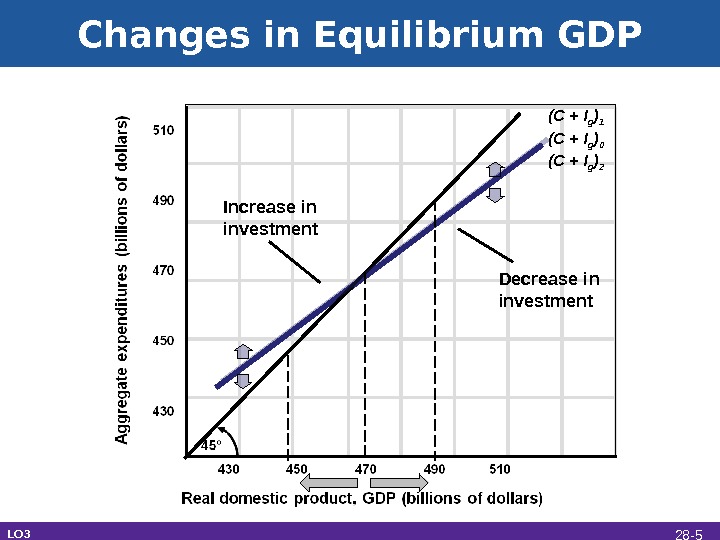

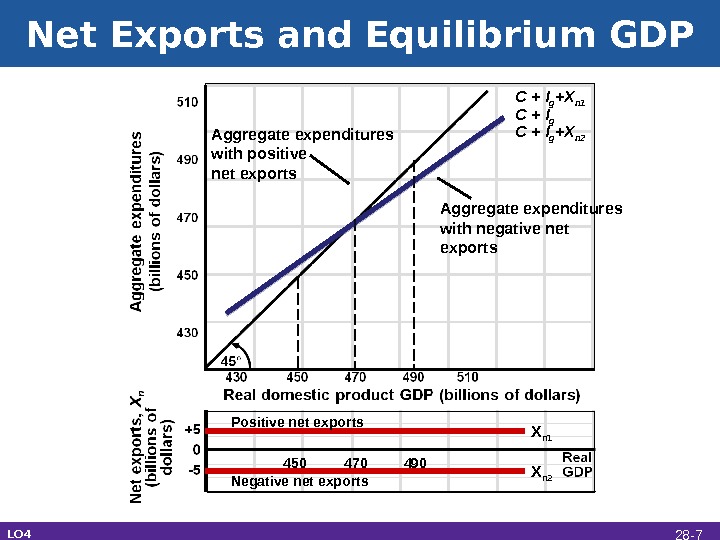
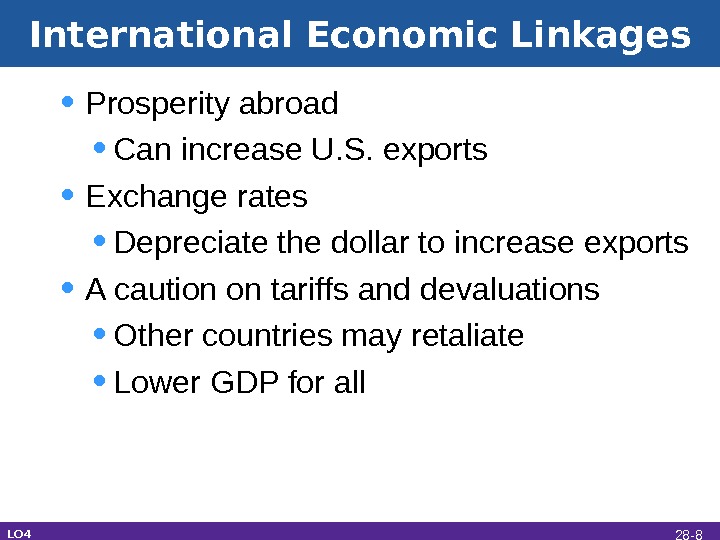
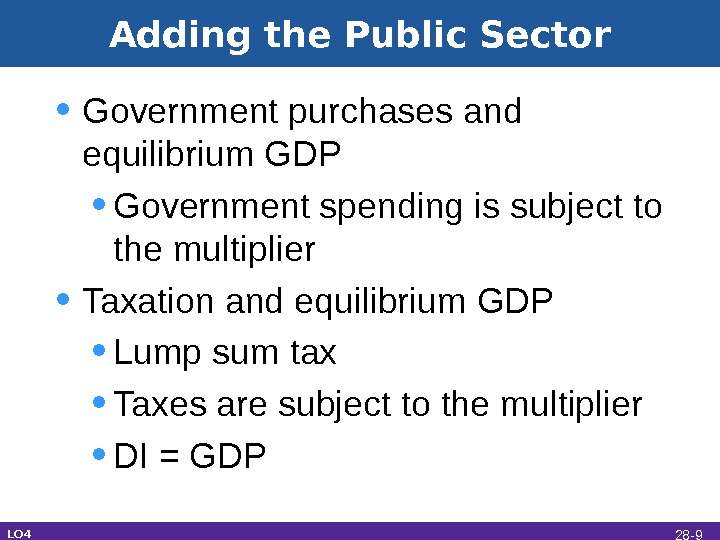
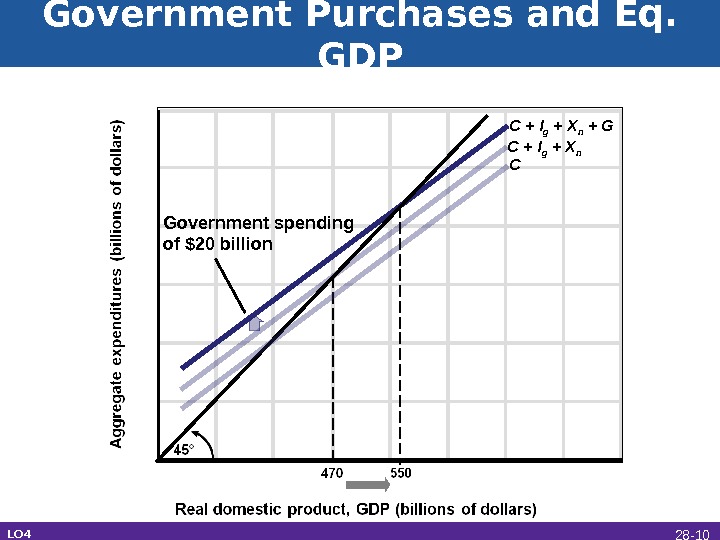
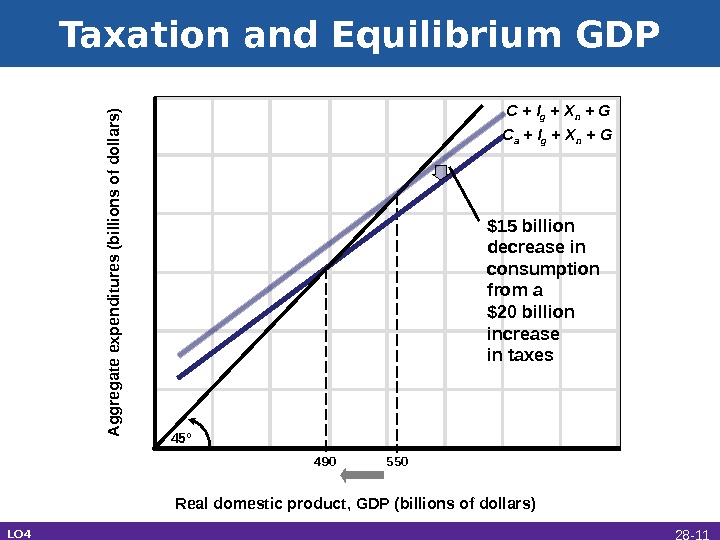
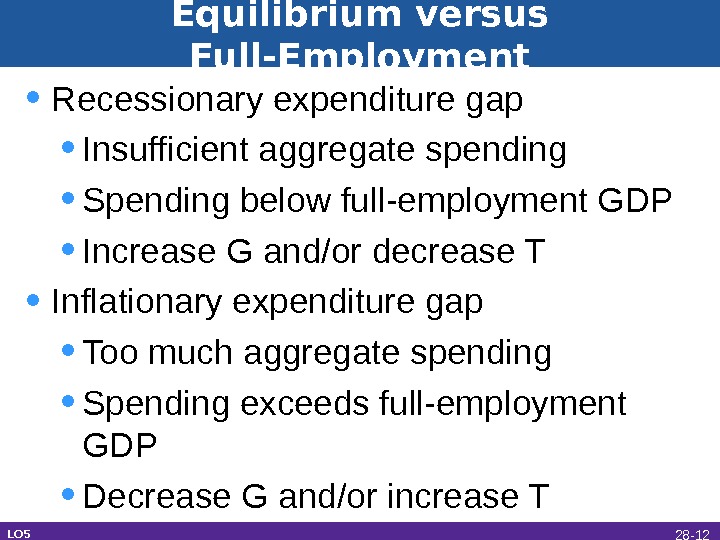

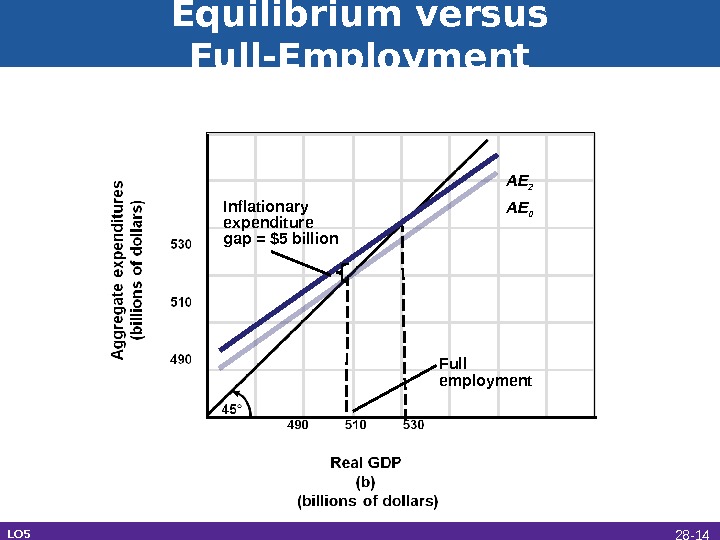
the_aggregate_expenditures_model.ppt
- Размер: 931 Кб
- Количество слайдов: 14
Описание презентации The Aggregate Expenditures Model 28 Mc. Graw-Hill/Irwin по слайдам
 The Aggregate Expenditures Model 28 Mc. Graw-Hill/Irwin Copyright © 2012 by The Mc. Graw-Hill Companies, Inc. All rights reserved.
The Aggregate Expenditures Model 28 Mc. Graw-Hill/Irwin Copyright © 2012 by The Mc. Graw-Hill Companies, Inc. All rights reserved.
 Assumptions and Simplifications • Use the Keynesian aggregate expenditures model • Prices are fixed • GDP = DI • Begin with private, closed economy • Consumption spending • Investment spending LO 1 28 —
Assumptions and Simplifications • Use the Keynesian aggregate expenditures model • Prices are fixed • GDP = DI • Begin with private, closed economy • Consumption spending • Investment spending LO 1 28 —
 Equilibrium GDP C I g = $20 billion. Aggregate expenditures C = $450 billion C + I g (C + I g = GDP) Equilibrium point LO 1 28 —
Equilibrium GDP C I g = $20 billion. Aggregate expenditures C = $450 billion C + I g (C + I g = GDP) Equilibrium point LO 1 28 —
 Other Features of Equilibrium GDP • Saving equals planned investment • Saving is a leakage of spending • Investment is an injection of spending • No unplanned changes in inventories • Firms do not change production LO 2 28 —
Other Features of Equilibrium GDP • Saving equals planned investment • Saving is a leakage of spending • Investment is an injection of spending • No unplanned changes in inventories • Firms do not change production LO 2 28 —
 Changes in Equilibrium GDP Increase in investment (C + I g ) 0 Decrease in investment (C + I g ) 2(C + I g ) 1 LO 3 28 —
Changes in Equilibrium GDP Increase in investment (C + I g ) 0 Decrease in investment (C + I g ) 2(C + I g ) 1 LO 3 28 —
 Adding International Trade • Include net exports spending in aggregate expenditures • Private, open economy • Exports create production, employment, and income • Subtract spending on imports • Xn can be positive or negative LO 4 28 —
Adding International Trade • Include net exports spending in aggregate expenditures • Private, open economy • Exports create production, employment, and income • Subtract spending on imports • Xn can be positive or negative LO 4 28 —
 Net Exports and Equilibrium GDP Aggregate expenditures with positive net exports C + I g Aggregate expenditures with negative net exports C + I g +X n 2 C + I g +X n 1 X n 2 Positive net exports Negative net exports 450 470 490 LO 4 28 —
Net Exports and Equilibrium GDP Aggregate expenditures with positive net exports C + I g Aggregate expenditures with negative net exports C + I g +X n 2 C + I g +X n 1 X n 2 Positive net exports Negative net exports 450 470 490 LO 4 28 —
 International Economic Linkages • Prosperity abroad • Can increase U. S. exports • Exchange rates • Depreciate the dollar to increase exports • A caution on tariffs and devaluations • Other countries may retaliate • Lower GDP for all LO 4 28 —
International Economic Linkages • Prosperity abroad • Can increase U. S. exports • Exchange rates • Depreciate the dollar to increase exports • A caution on tariffs and devaluations • Other countries may retaliate • Lower GDP for all LO 4 28 —
 Adding the Public Sector • Government purchases and equilibrium GDP • Government spending is subject to the multiplier • Taxation and equilibrium GDP • Lump sum tax • Taxes are subject to the multiplier • DI = GDP LO 4 28 —
Adding the Public Sector • Government purchases and equilibrium GDP • Government spending is subject to the multiplier • Taxation and equilibrium GDP • Lump sum tax • Taxes are subject to the multiplier • DI = GDP LO 4 28 —
 Government Purchases and Eq. GDP C Government spending of $20 billion C + I g + X n + G LO 4 28 —
Government Purchases and Eq. GDP C Government spending of $20 billion C + I g + X n + G LO 4 28 —
 Taxation and Equilibrium GDP 45° 490 550 Real domestic product, GDP (billions of dollars)A ggregate expenditures (billions of dollars) $15 billion decrease in consumption from a $20 billion increase in taxes C a + I g + X n + GC + I g + X n + G LO 4 28 —
Taxation and Equilibrium GDP 45° 490 550 Real domestic product, GDP (billions of dollars)A ggregate expenditures (billions of dollars) $15 billion decrease in consumption from a $20 billion increase in taxes C a + I g + X n + GC + I g + X n + G LO 4 28 —
 Equilibrium versus Full-Employment • Recessionary expenditure gap • Insufficient aggregate spending • Spending below full-employment GDP • Increase G and/or decrease T • Inflationary expenditure gap • Too much aggregate spending • Spending exceeds full-employment GDP • Decrease G and/or increase T LO 5 28 —
Equilibrium versus Full-Employment • Recessionary expenditure gap • Insufficient aggregate spending • Spending below full-employment GDP • Increase G and/or decrease T • Inflationary expenditure gap • Too much aggregate spending • Spending exceeds full-employment GDP • Decrease G and/or increase T LO 5 28 —
 Equilibrium versus Full-Employment Real GDP (a) Recessionary expenditure gap. A ggregate expenditures (billions of dollars)530 510 490 45° 490 510 530 AE 0 AE 1 Full employment Recessionary expenditure gap = $5 billion LO 5 28 —
Equilibrium versus Full-Employment Real GDP (a) Recessionary expenditure gap. A ggregate expenditures (billions of dollars)530 510 490 45° 490 510 530 AE 0 AE 1 Full employment Recessionary expenditure gap = $5 billion LO 5 28 —
 Equilibrium versus Full-Employment AE 0 AE 2 Full employment. Inflationary expenditure gap = $5 billion LO 5 28 —
Equilibrium versus Full-Employment AE 0 AE 2 Full employment. Inflationary expenditure gap = $5 billion LO 5 28 —
